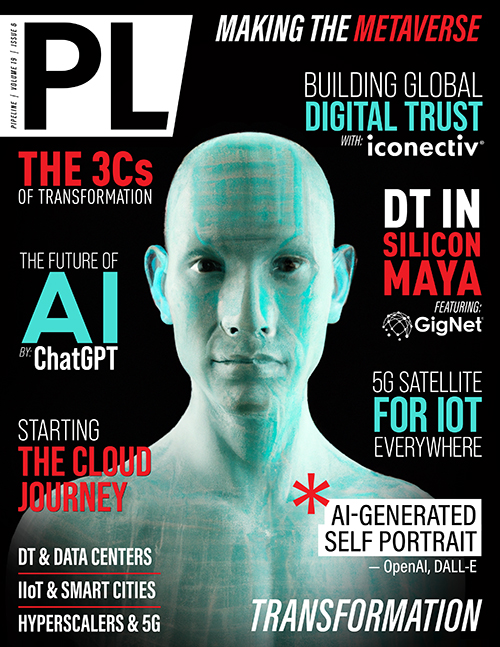Making the Metaverse a Reality
By: Thierry E. Klein

The next wave of digital change will usher in a revolution in commerce, economics, and culture brought forth by the metaverse(s), a range of digitally augmented worlds, realities, and business models. It is anticipated that by 2030, the metaverse economy will be worth between $8 and $13 trillion. Fundamental advancements in key technologies such as semiconductors, software, AI/ML, cloud, blockchain, virtual reality (VR), augmented reality (AR), extended reality (XR), and 5G/6G will be critical in the development of this more immersive world.
The technologies associated with metaverse and Web3 will have some of the biggest effects, changing the fundamental principles that govern how the virtual world functions. Web 3.0 and the metaverse are frequently regarded as complementary but not mutually exclusive. The decentralization and tokenization of Web3, including blockchains and NFTs, will be useful for some metaverse manifestations. And metaverse elements will be present in Web3’s experiential and social use cases.
Advancements in human augmentation and digital-physical fusion will fundamentally change how people interact in a combined physical and digital reality. The primary goals of human augmentation are to improve human-computer interfaces and create fully immersive experiences. Users will be able to interact in the metaverse by wearing VR goggles and XR glasses, receiving remote-controlled haptic feedback, and using brain-machine interfaces. Digital-physical fusion relates to the creation, understanding, and manipulation of dynamic representations of real-world objects, systems, and processes in the digital world. This will be made possible through ubiquitous, next-generation networking, advanced sensing, AI-based physical world understanding, and real-time and dynamic rendering engines.
There are numerous real-world business opportunities in the metaverse that will open a plethora of new opportunities in the consumer, enterprise, industrial, and public sectors, leading to not just one, but multiple metaverses. These virtual worlds will share technologies, devices, and interfaces with one another. The degree to which they are connected to one another will vary depending on the applications they use and the business models they choose to implement.
The industrial metaverse
Because it will be a few more years before VR and XR devices become user-friendly from an ergonomic and design perspective, as well as affordable, the development of the consumer metaverse may take longer to come to fruition than the development of the industrial and enterprise metaverses.
Industries are quickly advancing their digital transformations and using metaverse technologies like AR and digital twins in their operations. Industries hold some of the metaverse’s most significant and extensive potential. The sectors of our economies that serve as the backbones, such as the manufacturing, energy, logistics, construction, and transportation sectors, stand to benefit the most from the metaverse. Industrial and enterprise metaverses will invariably interact. A single product from the same company will pass through both as it moves from the drawing board to the factory floor. As the information technology (IT) systems in headquarters merge with the operational technology (OT) systems on the factory floor, the distinctions between these two business-focused metaverses will blur. The industrial and enterprise metaverses can revolutionize how organizations engage, carry out operations, create, and deliver goods and services, and manage their business relationships.
The network must evolve
Without a robust and pervasive connectivity architecture, the metaverse, with all of its immense powers, cannot grow. As a result, the network will serve as the critical enabler for the opportunities that the metaverse will bring. This will require networks that are robust, adaptable, and incredibly powerful. This means there need to be significant advancements in latency, bandwidth, speed, reliability, and accessibility.


















